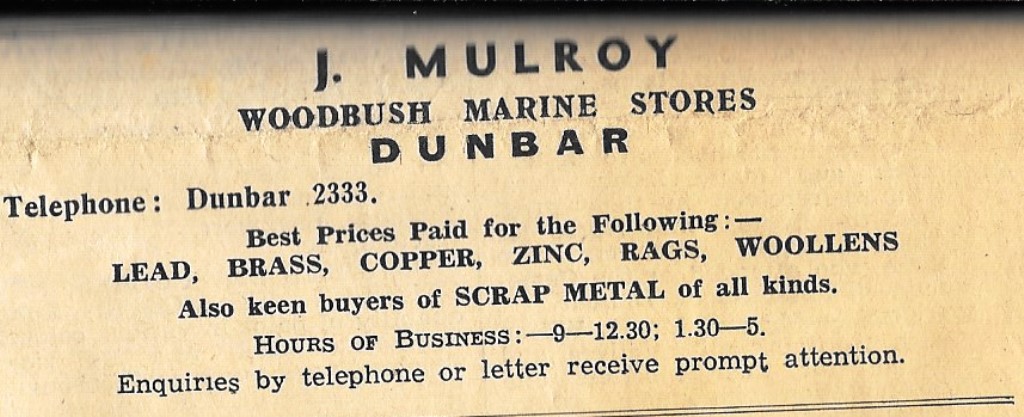A mixed bag of images for December. Firstly, a 1936 bill from George Low and Son, then an undated photo of the High Street with the St George Garage, followed by adverts from the Haddingtonshire Courier in 1961.

The above is a very interesting document, a copy of which was given to the Society by Pamela Huntly (nee Dickson). A clearer PDF version of the bill can be found here: G Low 1936 bill If you click on this link, you’ll see some fascinating detail. Firstly, the partners were George Low and George Paterson Low, father and grandfather of George Low, the final owner of the business. On the top left of the bill, you can see “Bedding and Mattresses Purified and Re-made”. The purifying was most likely done by putting the horsehair, of which the mattress was made, through a “teasy-weasy” machine which separated the horsehair and removed dust – and other things maybe!

The photo above is of Dunbar High Street in the 1930s (possibly) and on the right hand side you can see the sign for the St George Garage. According to an eminent local historian, there was a petrol pump outside the St George Hotel. The garage, owned by the Stark family, was at the bottom of what is now Cossars Wynd. There was a wire which ran up the alley from the garage to the pump. When a customer arrived for petrol, Miss Stark would pull the wire and a man from the garage would come to serve the petrol. A copy of the photo was donated to the Society by Verna Tennant.

The advert above was in the Haddingtonshire Courier on 14 July 1961 (as was the Daniel Smith advert below). This was also known as “Fiddler’s Yard” as the owner, Mr Mulroy, bought and sold a range of goods, as well as scrap metal. “Marine Stores” maybe refers to its location at Woodbush, rather than the nature of the business.
The final resource is an advert for the Playhouse Cinema in July 1961. You can see images from Six Bridges to Cross here and an extended trailer for Flaming Star here. These were the days when the cinema – always known as the picture house – had 4 main films per week, plus matinees. People often went to the cinema more than once a week at this time as television (if you had one) was only in black and white and had limited programming.

You must be logged in to post a comment.